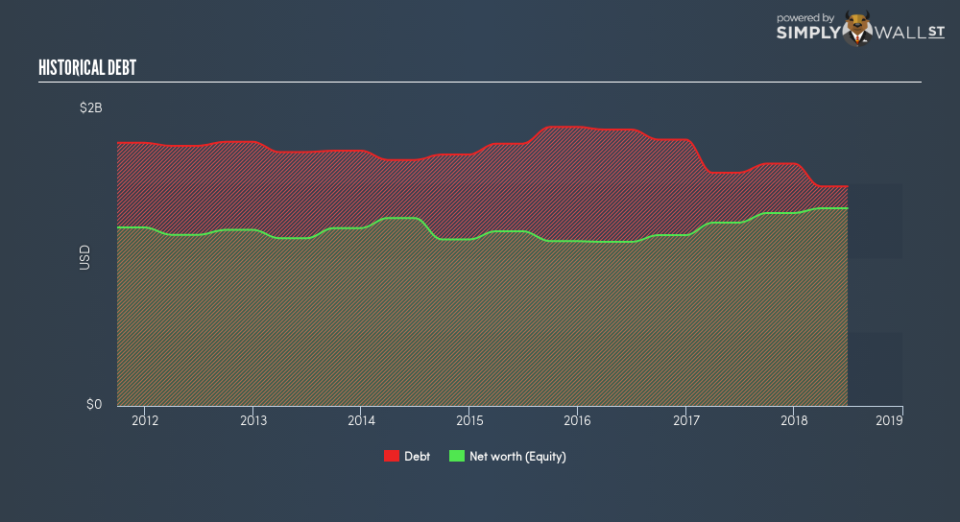Is Computershare Limited (ASX:CPU) A Financially Sound Company?

Small-caps and large-caps are wildly popular among investors; however, mid-cap stocks, such as Computershare Limited (ASX:CPU) with a market-capitalization of AU$10.61b, rarely draw their attention. However, history shows that overlooked mid-cap companies have performed better on a risk-adjusted manner than the smaller and larger segment of the market. This article will examine CPU’s financial liquidity and debt levels to get an idea of whether the company can deal with cyclical downturns and maintain funds to accommodate strategic spending for future growth. Remember this is a very top-level look that focuses exclusively on financial health, so I recommend a deeper analysis into CPU here.
View our latest analysis for Computershare
Does CPU produce enough cash relative to debt?
CPU has shrunken its total debt levels in the last twelve months, from US$1.57b to US$1.48b , which comprises of short- and long-term debt. With this debt payback, CPU currently has US$511.8m remaining in cash and short-term investments , ready to deploy into the business. Moreover, CPU has generated US$514.1m in operating cash flow over the same time period, resulting in an operating cash to total debt ratio of 34.7%, meaning that CPU’s debt is appropriately covered by operating cash. This ratio can also be interpreted as a measure of efficiency as an alternative to return on assets. In CPU’s case, it is able to generate 0.35x cash from its debt capital.
Can CPU meet its short-term obligations with the cash in hand?
Looking at CPU’s most recent US$1.09b liabilities, the company has maintained a safe level of current assets to meet its obligations, with the current ratio last standing at 1.14x. Generally, for IT companies, this is a reasonable ratio since there’s sufficient cash cushion without leaving too much capital idle or in low-earning investments.
Is CPU’s debt level acceptable?
Since total debt levels have outpaced equities, CPU is a highly leveraged company. This is not uncommon for a mid-cap company given that debt tends to be lower-cost and at times, more accessible. We can test if CPU’s debt levels are sustainable by measuring interest payments against earnings of a company. Ideally, earnings before interest and tax (EBIT) should cover net interest by at least three times. For CPU, the ratio of 7.33x suggests that interest is appropriately covered, which means that lenders may be less hesitant to lend out more funding as CPU’s high interest coverage is seen as responsible and safe practice.
Next Steps:
Although CPU’s debt level is towards the higher end of the spectrum, its cash flow coverage seems adequate to meet obligations which means its debt is being efficiently utilised. This may mean this is an optimal capital structure for the business, given that it is also meeting its short-term commitment. I admit this is a fairly basic analysis for CPU’s financial health. Other important fundamentals need to be considered alongside. I suggest you continue to research Computershare to get a more holistic view of the mid-cap by looking at:
Future Outlook: What are well-informed industry analysts predicting for CPU’s future growth? Take a look at our free research report of analyst consensus for CPU’s outlook.
Valuation: What is CPU worth today? Is the stock undervalued, even when its growth outlook is factored into its intrinsic value? The intrinsic value infographic in our free research report helps visualize whether CPU is currently mispriced by the market.
Other High-Performing Stocks: Are there other stocks that provide better prospects with proven track records? Explore our free list of these great stocks here.
To help readers see past the short term volatility of the financial market, we aim to bring you a long-term focused research analysis purely driven by fundamental data. Note that our analysis does not factor in the latest price-sensitive company announcements.
The author is an independent contributor and at the time of publication had no position in the stocks mentioned. For errors that warrant correction please contact the editor at editorial-team@simplywallst.com.

 Yahoo Finance
Yahoo Finance 
